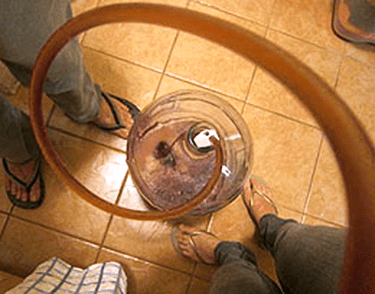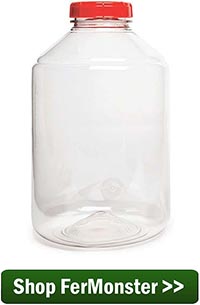 This past month, I bought my brother, who just started homebrewing, a red ale beer recipe kit. Checking in on his progress, he asked me this question:
This past month, I bought my brother, who just started homebrewing, a red ale beer recipe kit. Checking in on his progress, he asked me this question:
“My beer is in the process of fermenting. We started fermenting it in the bottling bucket because we plan on racking the beer into a secondary fermenter to do a secondary fermentation on the beer, but we never got around to racking it, so the beer is approaching three weeks of primary fermentation. Do you think it would be worth it to try a secondary fermentation for a week, or do you think we should just go straight to bottling the beer at this point?”
After three weeks in primary, it’s highly likely that your beer is done fermenting, and it’s probably safe to go ahead and bottle your beer. But you can’t just bottle straight from your primary fermenter: it’s full of yeast and other trub that you should try to keep out of your finished beer.
Here’s what I would do:
 Rack the beer to your other (sanitized!) secondary fermenter and take a gravity reading with your hydrometer to see whether the fermentation is complete. It most likely will be at this point, but you want to be sure. Remember, if you take a reading directly in the bucket, your hydrometer should be sanitized beforehand.
Rack the beer to your other (sanitized!) secondary fermenter and take a gravity reading with your hydrometer to see whether the fermentation is complete. It most likely will be at this point, but you want to be sure. Remember, if you take a reading directly in the bucket, your hydrometer should be sanitized beforehand.
- You probably won’t need to plan for an extended secondary fermentation period, but in any case, go ahead and rack your beer from the primary to the secondary fermenter. This will give you the opportunity to free up your bottling bucket and discard the trub. Go ahead and clean out the bottling bucket so it will be ready for brew day.
- After 2-3 days in secondary, you can go ahead and bottle, provided that you’ve reached somewhat close to your anticipated final gravity. Bottle as you would normally. You can mix in the priming sugar as it fills back into your bottling bucket.
Though the beer’s secondary fermentation probably won’t affect your gravity at this point, I’d recommend at least 2-3 days to allow the yeast, which will get stirred up when you’re racking, to settle again. This may also be a good time to add gelatin or isinglass if you find that your beer is especially cloudy. Racking beer into a secondary fermenter is never a bad thing.
Tip: Many aspects of homebrewing are made easier by thinking through the process in advance. Think backwards from the end of the brewing process to figure out your brew day or bottling day sequence so that racking and bottling, etc. are more convenient to your schedule. Good luck!
—–
David Ackley is a beer writer, brewer, and self-described “craft beer crusader.” He holds a General Certificate in Brewing from the Institute of Brewing and Distilling and is founder and editor of the Local Beer Blog.

I have a bottling bucket (plastic or whatever the material is) with a tap on the bottom. I typically sanitize it, put in the priming sugar, and then rack from the primary into the bottling bucket, after which I immediately bottle it. Thanks for the suggestion to let it sit for a few days before bottling.